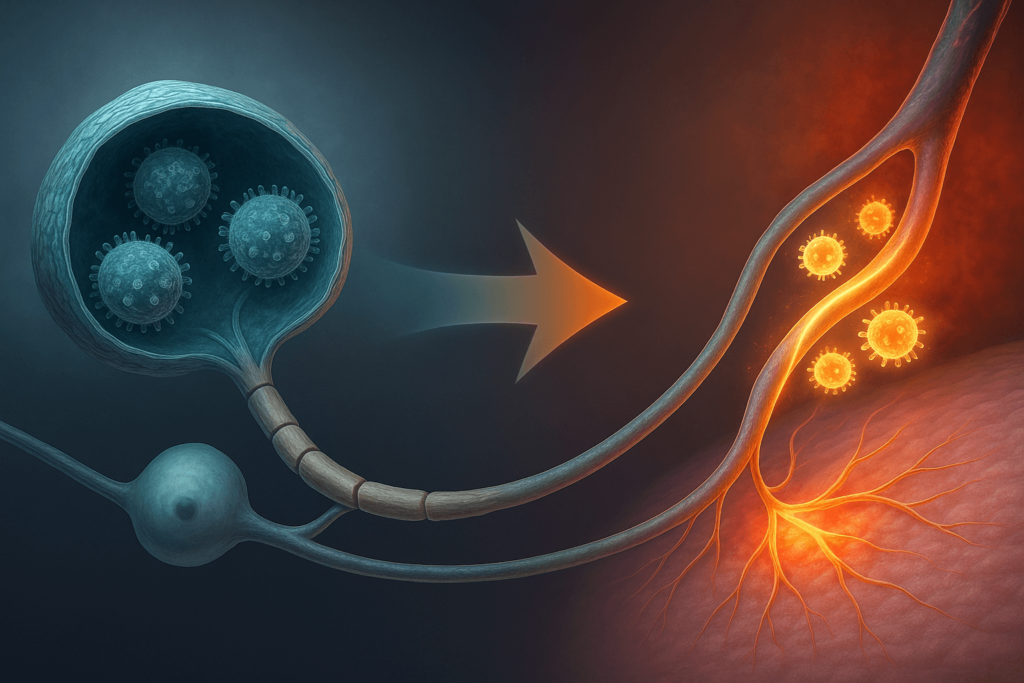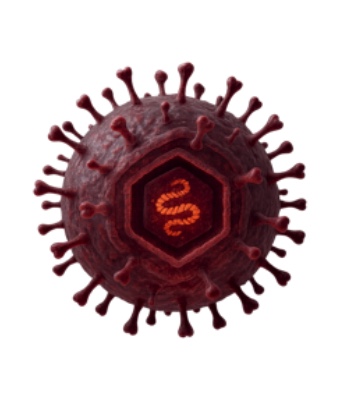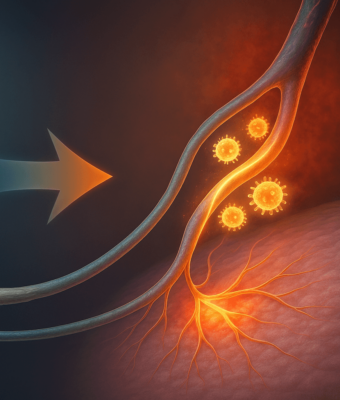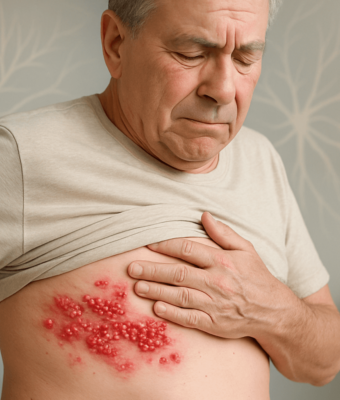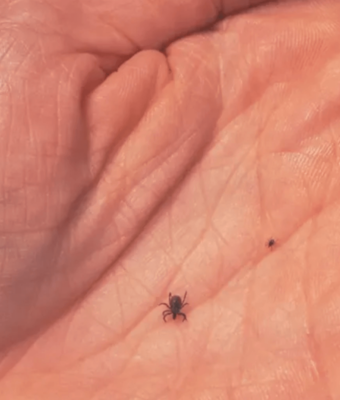Herpes zoster, commonly known as shingles “kenali cacar api”, is a clinical condition caused by the reactivation of the neurotropic Varicella-Zoster Virus (VZV)—the same virus responsible for chickenpox (varicella). This article comprehensively explores the mechanisms behind VZV reactivation, its triggers, why shingles may recur, and clinical strategies for prevention.
Reactivation Mechanism: From Varicella to Herpes Zoster
After primary varicella infection (usually during childhood), VZV is not completely eliminated from the body. Instead, it enters a latent phase in the dorsal sensory ganglia, especially cranial and spinal ganglia—remaining inactive and asymptomatic.
Reactivation occurs when there is a decline in cellular immunity against VZV, particularly in CD4+ and CD8+ T cells specific to the virus, which are critical in controlling latent infection.
Why Does Shingles “kenali cacar api” Recur?
- Immunosenescence (Age-Related Decline in Immunity)
The quantity and quality of memory T cells decline with age, which explains the sharp increase in shingles incidence after age 50.
- Immunosuppression
- Immunosuppressive therapies: chemotherapy, long-term corticosteroids, post-transplantation treatment.
- Chronic medical conditions: HIV/AIDS, cancer, decompensated diabetes mellitus, advanced CKD.
- Severe Physical or Psychological Stress
Neuro-immunological pathways may disrupt VZV-specific T-cell function.
- Secondary Infections or Viral Co-infections
Some cases report VZV reactivation triggered by infections like COVID-19.
- No or Incomplete Herpes Zoster Vaccination
- Exposure to varicella or zoster vaccine provides natural immunity boosting.
- Reactivation risk increases in unvaccinated individuals or in cases where live-attenuated vaccine immunity has waned.
Herpes Zoster Recurrence: How Often Does It Happen?
Recurrence can occur even after a prior shingles “kenali cacar api” episode. Studies show:
- 10-year recurrence risk ranges from 1.7% to 6.2%.
- Higher in women, older adults, and immunocompromised patients.
- It is not directly transmissible as shingles “kenali cacar api”, but VZV can cause chickenpox in non-immune contacts.
Clinical Diagnosis and Confirming Recurrence
- Diagnostic Criteria:
- Unilateral pain history followed by vesicular rash confined to a single dermatome.
- Rash typically does not cross the midline.
- Recurrent rash may appear in the same or different dermatome from the initial episode.
- Supporting Tests (if needed):
- VZV-DNA PCR from vesicle fluid (gold standard).
- IgG/IgM serology is less sensitive for reactivation cases.
- Lesion biopsy can assist in differentiating from contact dermatitis, HSV, or vasculitis.
Potential Complications of Recurrent Herpes Zoster
- Postherpetic Neuralgia (PHN): Higher risk in recurrence, especially if prior episode was poorly managed.
- Zoster Ophthalmicus or Oticus (Ramsay Hunt Syndrome): May occur in recurrence.
- Disseminated Zoster: Seen in severely immunocompromised patients.
Management of Recurrent Herpes Zoster
- Antiviral Therapy (within 72 hours of rash onset):
- Same agents as primary episode: Acyclovir, Valacyclovir, or Famciclovir.
- IV Acyclovir may be indicated in severe or immunodeficient cases.
- Pain Management and PHN Prevention:
- Use of gabapentin/pregabalin, TCAs, topical lidocaine per neuropathic pain protocol.
- Aggressive pain control is essential to reduce PHN recurrence risk.
Prevention Strategy: Role of Vaccination
Primary Indications for Herpes Zoster Vaccination:
- Adults aged ≥50 years (regardless of prior herpes zoster history)
- Patients with chronic illness/immunocompromised status (considering vaccine type)
- Can be administered even after a previous shingles episode
Clinical Conclusion
Shingles “kenali cacar api” recurrence is a clinically relevant phenomenon involving complex host-virus interactions. Identifying risk factors and closely monitoring vulnerable populations is crucial for long-term prevention.
Early antiviral intervention, optimal pain management, and recombinant vaccination serve as key pillars to reduce recurrence rates, disease duration, and long-term complications such as PHN.
Healthcare professionals play a pivotal role in early detection “kenali cacar api”, patient education, and implementing preventive protocols among high-risk groups.
References:
- Yawn BP, et al. Epidemiology of herpes zoster recurrence in a population-based cohort. Mayo Clin Proc. 2011;86(2):88–93.
- Gagliardi AMZ, et al. Vaccines for preventing herpes zoster in older adults. Cochrane Database Syst Rev. 2019.
- Dworkin RH, et al. Management of Herpes Zoster and Postherpetic Neuralgia. Clin Infect Dis. 2007;44(Suppl 1):S1–S26.
- Cunningham AL, et al. N Engl J Med. 2016;375(11):1019–32.
- IDAI & PAPDI. Adult and Elderly Vaccination Guidelines. 2025.
- Indonesian Dermatology Association. Clinical Guideline for Herpes Zoster, 2023.
About Docquity
If you need more confidence and insights to boost careers in healthcare, expanding the network to other healthcare professionals to practice peer-to-peer learning might be the answer. One way to do it is by joining a social platform for healthcare professionals, such as Docquity.
Docquity is an AI-based state-of-the-art private & secure continual learning network of verified doctors, bringing you real-time knowledge from thousands of doctors worldwide. Today, Docquity has over 400,000 doctors spread across six countries in Asia.
Meet experts and trusted peers across Asia where you can safely discuss clinical cases, get up-to-date insights from webinars and research journals, and earn CME/CPD credits through certified courses from Docquity Academy. All with the ease of a mobile app available on Android & iOS platforms!
